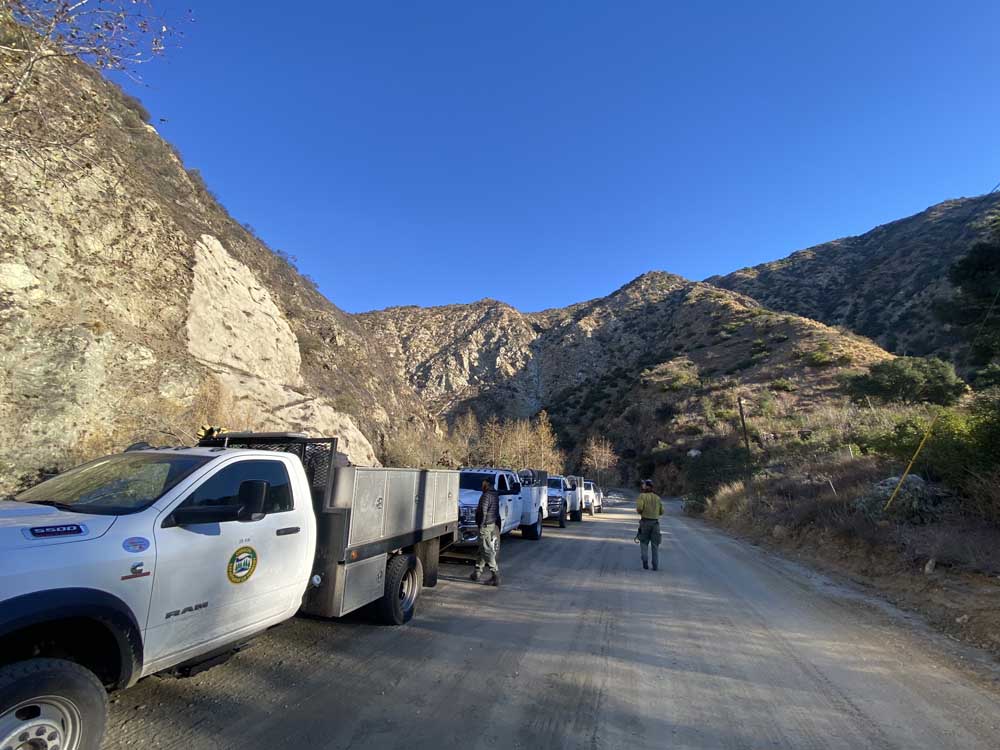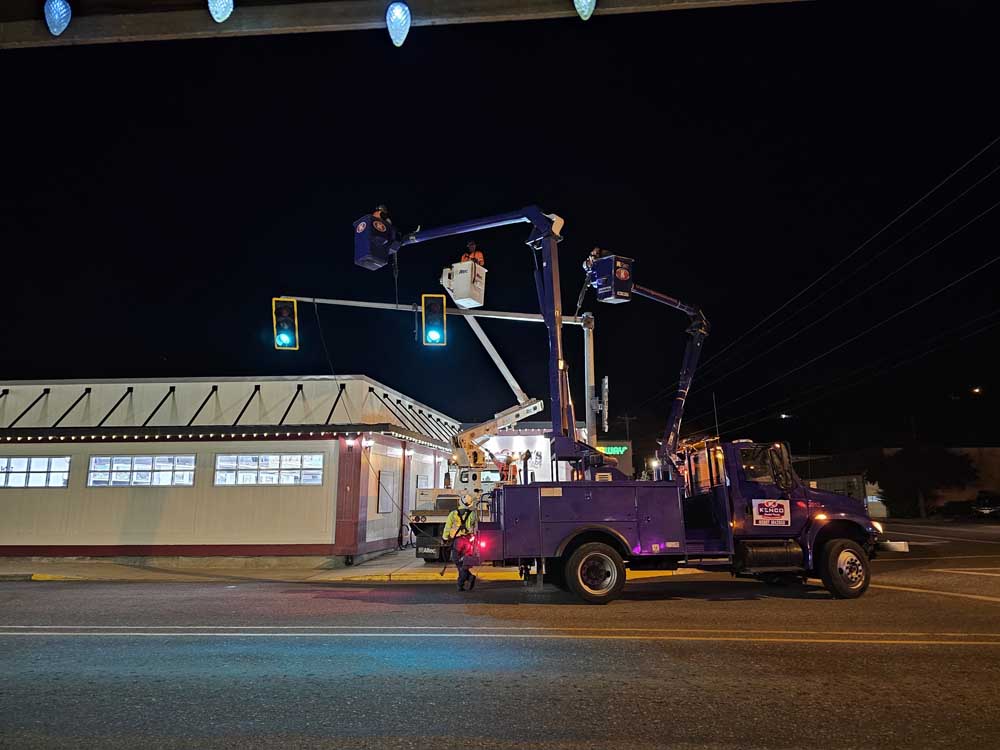LA fires pose challenges, present learning opportunities for ODF firefighters
Published 3:00 pm Friday, January 17, 2025

- Oregon Department of Forestry trucks line a road during firefighting operations at Wilderness Park near Arcadia, California, just northeast of Los Angeles on Jan. 13, 2025.
LOS ANGELES — Matthew Brown, the stewardship forester for John Day’s Oregon Department of Forestry unit, has seen plenty of fires during his 13 years with ODF, but none have left such a wide swath of destruction in their wake as those now burning in Los Angeles.
The Eaton Fire has burned over 14,000 acres and is 55% contained, while the Palisades Fire has scorched over 23,000 acres and is only 22% contained.
The blazes have torched more than 12,000 structures, caused tens of billions of dollars’ worth of damage and led to the deaths of at least 27 people since they started on Jan. 7.
Getting to California
Brown said he and others at ODF were wondering when they’d get called out after the start of the fires. Once the request for engine strike teams came in, it was all hands on deck at the agency because seasonal firefighters were not on the job yet.
“We pretty much pulled just about everybody we had out of the office in order to send them,” he said.
Brown’s group left for Southern California on Jan. 9, stopping in Davis for a routine fire engine safety check. That brief stop has been the subject of much speculation and has led to accusations that firefighters were held up due to emission control issues.
“I’m going to address this now, since I know there’s been a lot of misinformation about emission controls in San Francisco and all this stuff,” Brown said. “None of that is true. We did not get stopped. Nobody got turned around.”
Brown said that following some repairs to their engines, the group was back on the road and headed to their fire camp at the Rose Bowl in Pasadena. As an Oregon State Beavers fan, Brown has a fondness for the stadium following this year’s college football playoff defeat of rival Oregon by Ohio State.
“You know, we’re sleeping in the Rose Bowl … every day, and you just kind of get to wake up and go, this is where the Ducks’ last game was played,” he said.
Despite the chaos associated with the fires, Brown said getting what he and his crew need to fight the flames hasn’t been difficult. Widespread community support and generosity in addition to the support of California’s firefighting agency means Brown has everything he and his crew need to be successful.
Brown said there wasn’t much more anxiousness or nerves in heading to the fires than what he and his crew normally experience despite harrowing scenes of urban destruction and mass evacuations.
“I would say we were more positively anxious than we were negatively, if that makes sense,” he said. “We were kind of looking forward to the experience.”
New experience
Brown and his fellow ODF firefighters are gaining experience unlike any they’ve ever had in battling the wildfires in Southern California. Trading the sagebrush and evergreen forests of Oregon for the urban jungle of Los Angeles has been eye-opening for Brown.
While there are some similarities between the LA fires and the Western Oregon blazes in 2020 that prompted a number of evacuations, the number of structures destroyed in Southern California is much greater.
“You know, the 2020 fires, when a lot of people got evacuated and stuff like that, it has a similar-ish feel to that,“ Brown said. “But this is just on (such) a huge scale. … We didn’t have the destruction that you’re seeing.”
The fires encroached into what Brown calls the wildland-urban interface, where homes and buildings are surrounded by trees and brush. Fighting fires in these areas is difficult due to factors generally not present on wildfires in less populated areas.
Brown said a human element is introduced when fires begin burning in the wildland urban interface, and the priority shifts from simply battling the flames to making sure everybody can get out safely.
The intense Santa Ana winds are not something Brown and his crew normally deal with, either. While not as intense as they were during the onset of the fires, Brown said the winds are still capable of carrying embers long distances and starting new blazes.
“The winds have been challenging, but manageable, he said.
Brown and his crew were not a part of the initial attack, when things were more chaotic. After speaking with firefighters who were part of the first response to the blazes, he said the fires seem to be much more manageable than they were early on.
Subconsciously, Brown said, he recognizes that all of the firefighters battling the blazes in Southern California are making a difference there. But it isn’t something he wants to brag about.
“It just kind of feels like it’s part of the job at this point,” he said.





